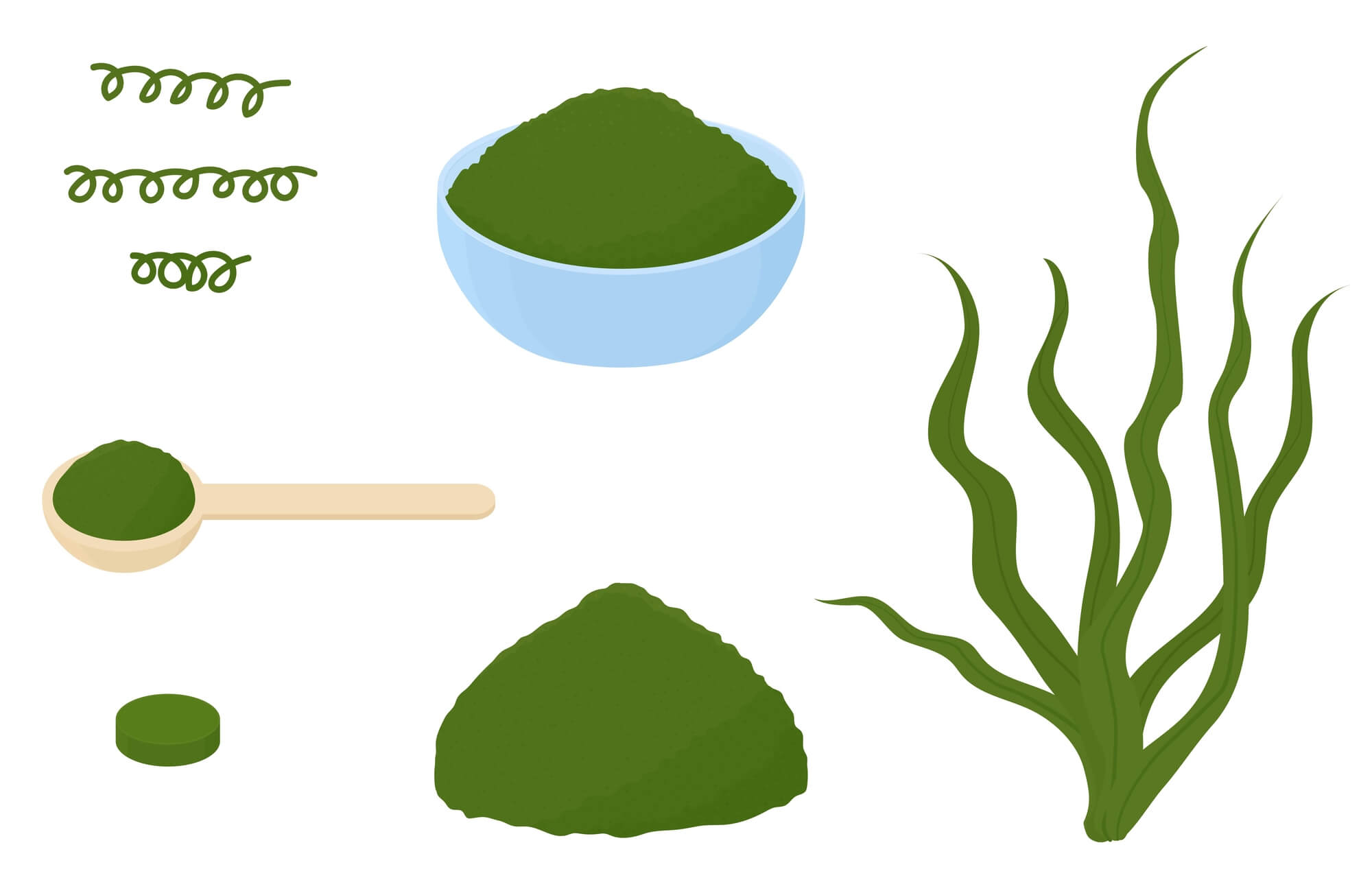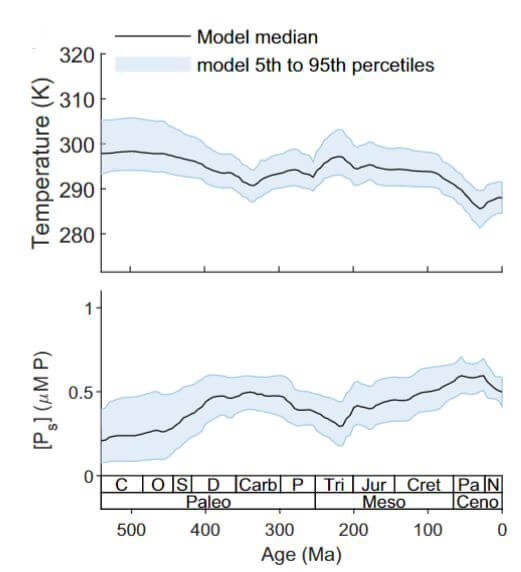When did unicellular algae become so nutritious - and how the change paved the way for an evolutionary leap

Even a tiny creature may leave a huge mark on the evolution of life on Earth - especially if its nutritional values are high. The microscopic algae that inhabit the surface of the oceans produce about half of the oxygen on Earth and are the basis of the entire marine ecosystem, but when and how did they become such a nutritious meal? in research recently published, Weizmann Institute of Science scientists reveal how changes in the nutrient content of microalgae in the oceans promoted significant evolutionary processes in the last half billion years.
Similar to plants on land, the microscopic algae in the sea, also known as phytoplankton, produce through photosynthesis a variety of chemical compounds that are necessary for sustaining life on Earth. These microalgae are also the basis of the marine food web: tiny creatures called zooplankton enjoy a rich algal buffet and in turn serve as a nutritious meal for larger creatures, such as various fish and crustacean species and so on. As a result, the nutrients contained in the algae spread throughout the food web and feed all marine life forms. But what affects the composition of the nutrients in algae and their quantity? The answer to this question has so far remained unanswered.

Prof. Itay Halevi From the Department of Earth and Planetary Sciences and his former PhD student, Dr. Shlomit Sharoni, have been focusing in recent years on the geophysical and geochemical aspects that affect the nutritional values of microalgae. In a previous study, they showed that the average nutrient content of algae depends to a large extent on the type of algae: there are algae strains that are simply richer in nutrients. It is not a complete surprise, then, that in places where environmental conditions are suitable for the existence of nutrient-rich algae species, the entire food web will be characterized by higher nutritional values. "The cold, nutrient-rich seawater near Antarctica allows highly nutritious phytoplankton species to thrive, while in warmer regions less nutritious species dominate. Therefore, in different areas, the entire marine ecosystem will be rich or poor in nutrients depending on the environmental conditions", explains Dr. Sharoni.
In the current study, the researchers sought to estimate how the environmental conditions that affect the nutritional values of the algae, i.e. the climate and the concentration of nutrients in the water, changed during the history of the earth, and in particular during the last 540 million years known as the Phanerozoic - a geological super-era that began with the appearance of visible animals visible and continues to this day. This era is characterized by a geological footprint - fossils of animals that have been preserved in sedimentary rocks and allow researchers not only to trace evolutionary processes, but also to understand these processes in conjunction with measurements and geochemical models, thus drawing a complete picture of the processes that shaped the surface of the earth.
To achieve their goal, the team of researchers developed a computational model that connects prominent biogeochemical cycles, and in particular the cycles of four elements: carbon, oxygen, nitrogen and phosphorus. Using the model, the researchers were able to tap, based on estimates of geological processes - from volcanic activity to precipitation patterns - what was the rate of transition of these elements from the land and air to the ocean and back. These transitions, also called fluxes, affected the amount of carbon dioxide in the atmosphere and, as a result, the climate and the concentration of essential nutrients, such as phosphate (phosphorous oxide), in the seawater. When the climate data and phosphate availability were calculated using the model, the researchers were able to conclude how the nutritional values of the microalgae changed over time.
In the next step, the researchers compared the model's predictions to findings from fossils, and were able to explain some important evolutionary patterns of the Phanerozoic era. While the nutritional values of the microalgae were previously assumed to have remained more or less constant, the new model revealed that the nutrient content has nearly doubled in the last 540 million years. This prediction fits well with the changes that have taken place in the composition of the microalgae in the ocean - that is, a shift from early, low-nutrient varieties to contemporary varieties that spread rapidly and are rich in essential nutrients. "It is clear that the quality of marine microalgae as a main source of food has increased throughout the ages," says Prof. Halevi, "It is possible that this improvement in food quality contributed to the development of large and complex marine creatures that need a greater amount of available nutrients."
In addition, the researchers were able to link between significant evolutionary and tectonic events and the growth in the amount of nutrients in algae. Until about 350 million years ago, photosynthesis occurred in the ocean almost exclusively. Only around that time, land plants developed that took on the expansion of the photosynthesis plant. Plants, as we know, accelerate processes of chemical weathering, during which elements are extracted from rocks and make their way to the sea. Thus, the takeover of vegetation on the continents significantly increased the flow of nutrients to the ocean. In addition, the breakup of the prehistoric supercontinent Pangea about 200 million years ago also increased this flow. "These events ultimately increased the availability in the ocean of phosphate that is naturally found in rocks and minerals. At the same time, marine microalgae apparently underwent evolutionary processes that allowed them to take advantage of the increasing availability of phosphate," explains Dr. Sharoni. Thus the algae became more nutritious and could support the accelerated development of other marine life forms. "The connection between geological events and evolutionary processes allowed us to rewrite the geological history of the nutrients in the ocean - and the way they affected the development of marine life forms", Prof. Halevi concludes.
Apart from a more accurate history of life on Earth, the approach developed by the researchers makes it possible to better understand how life in the ocean is currently affected by climate change. Global warming and the pollution of seawater with industrial and agricultural effluents may well change the availability of nutrients in the ocean. The change is expected to affect the nutritional values of the algae, and therefore the entire marine ecosystem.
More of the topic in Hayadan:
- Researchers at Tel Aviv University have found a way to increase the yield of hydrogen from unicellular algae 5 times for the vehicles of the future
- A European grant of 7.5 million euros was awarded to Miguel for a research project for pharmaceutical solutions and algae-based foods
- Researchers have managed to map the characteristics of photosynthesis in the fastest growing algae in the world
- Darwin as a bridge between microevolution and macroevolution
- Production of bio-fuel by cooking algae in a pressure cooker
